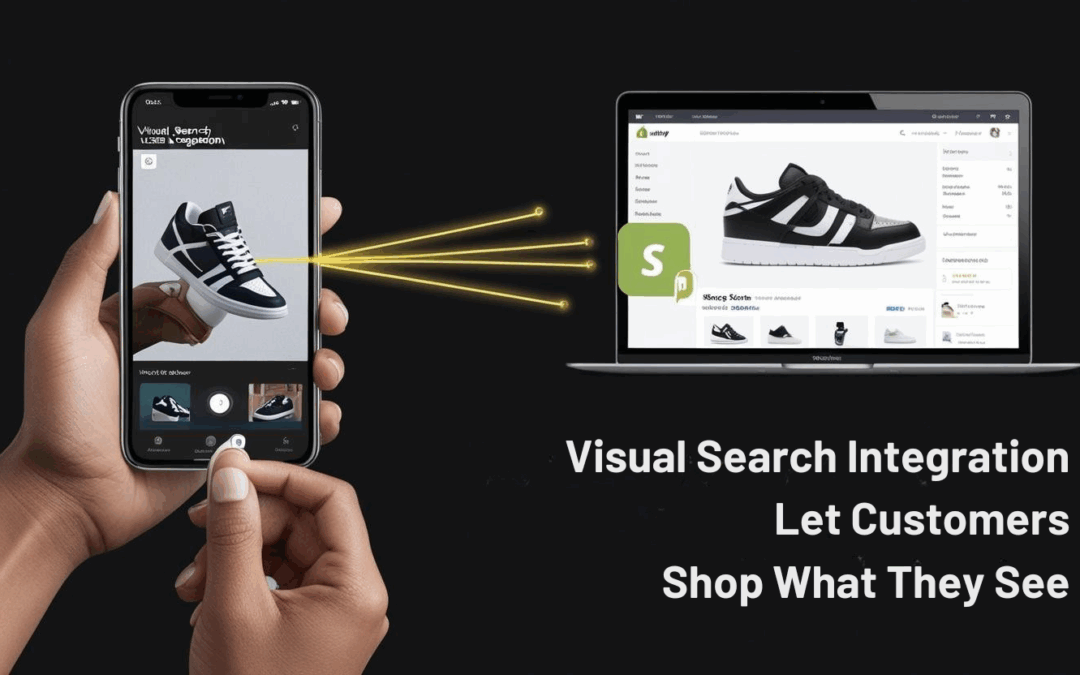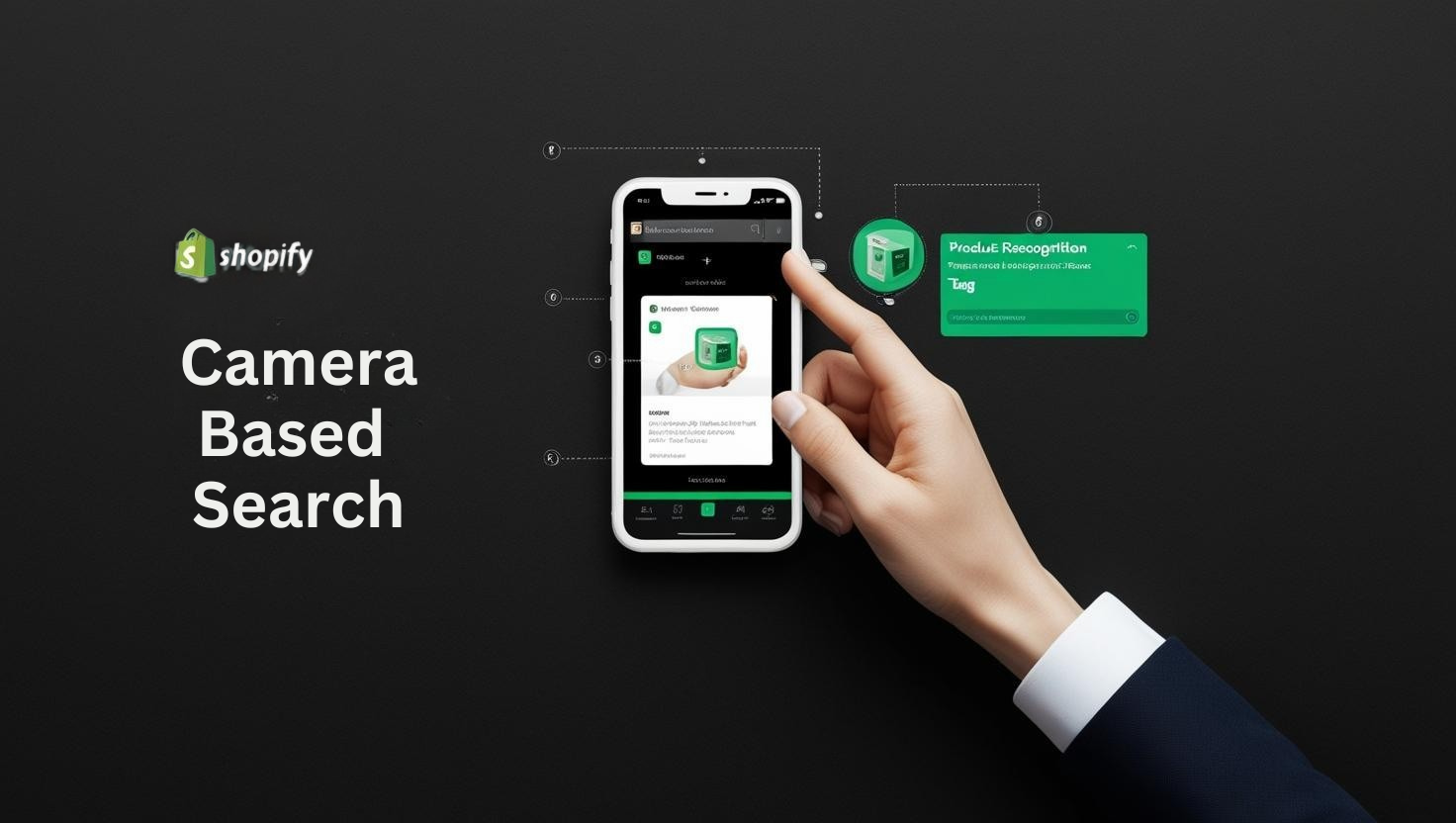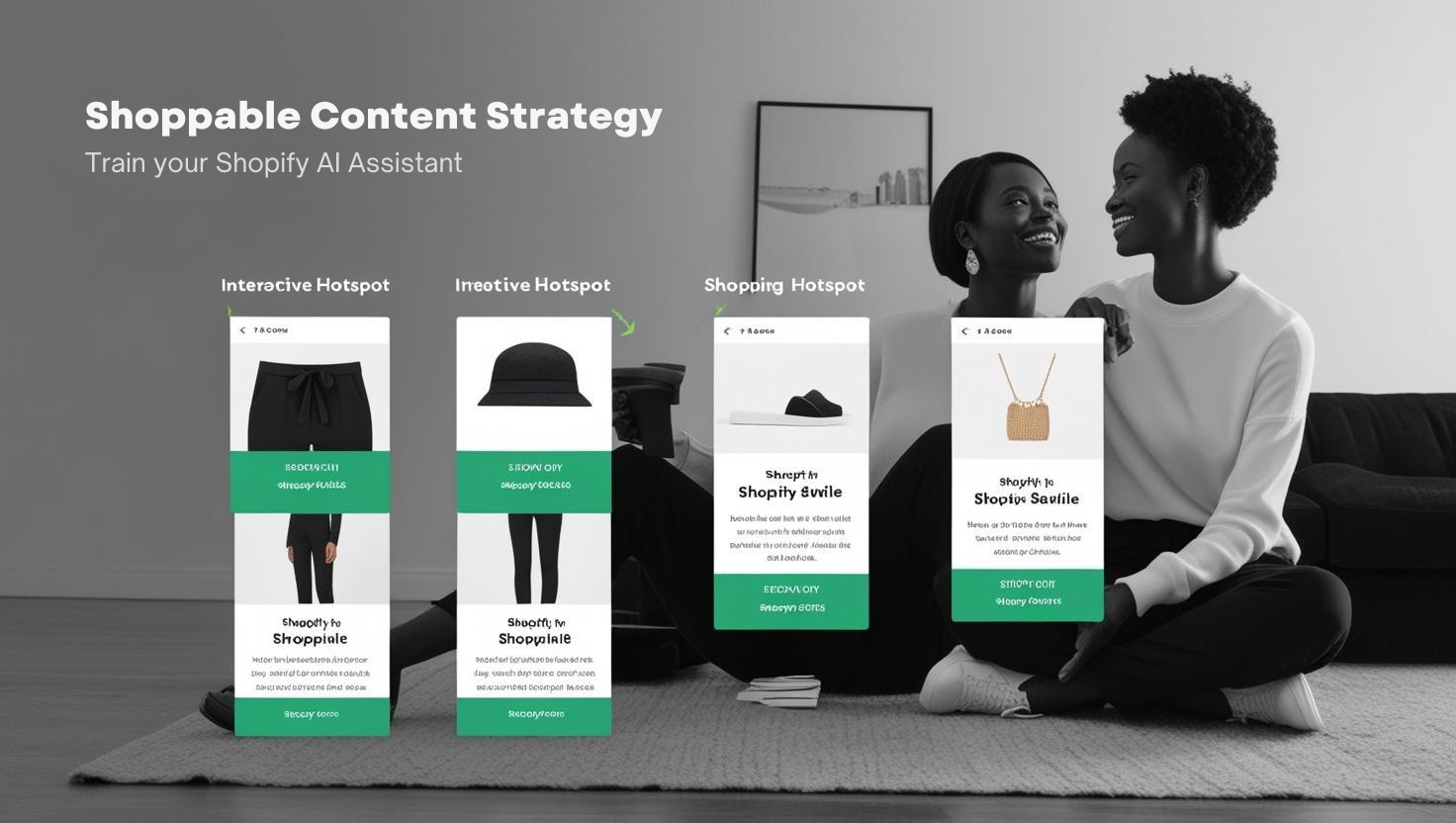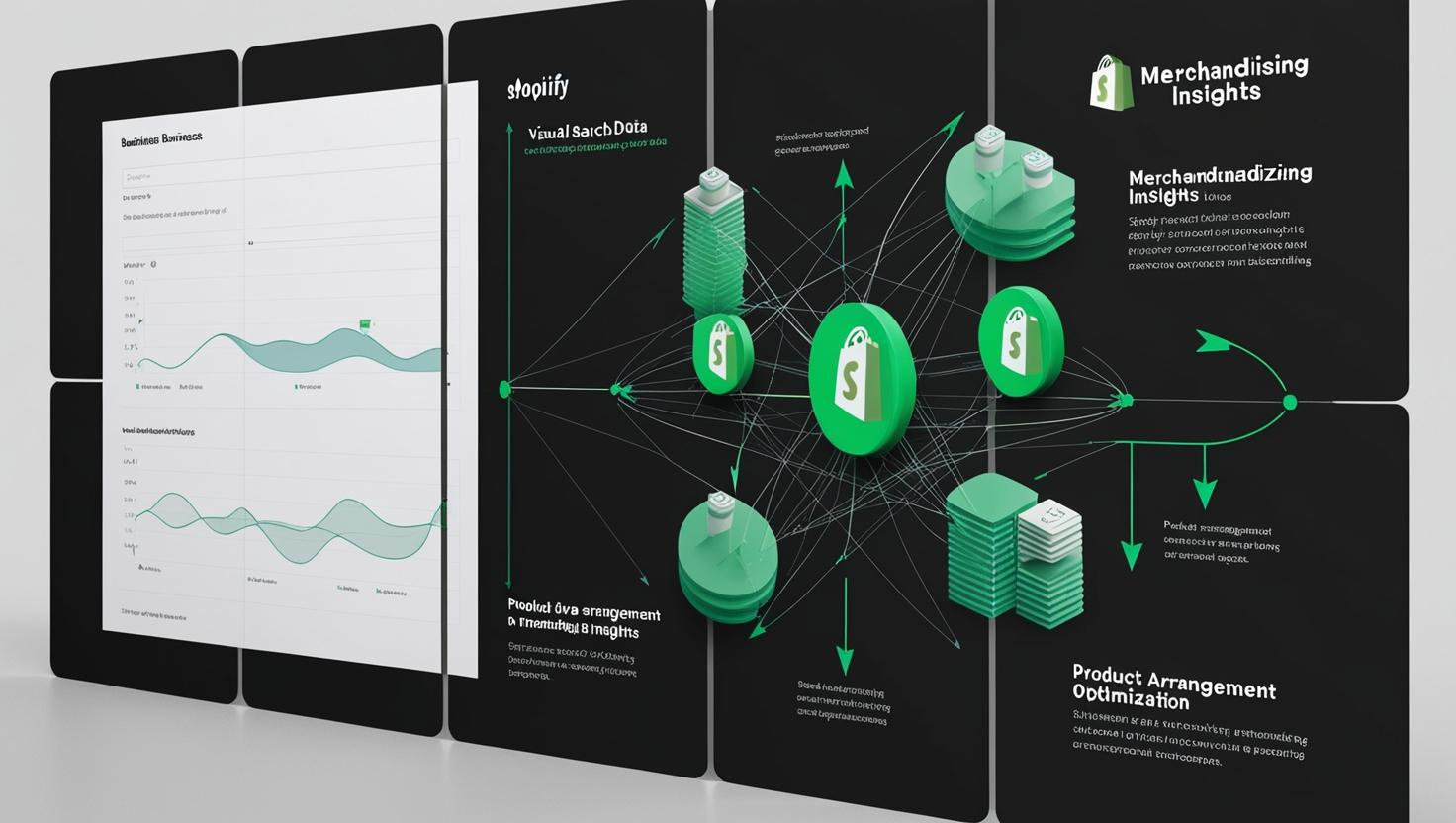Read More
Step-by-Step on SellerADvantage.co.uk
Read on LinkedIn
Read on Medium
Watch on YouTube
Visual Search Integration: Let Customers Shop What They See
Introduction
The e-commerce landscape is experiencing a paradigm shift as visual search technology transforms how consumers discover and shop for products online. Unlike traditional text-based search methods that require customers to articulate what they’re looking for using keywords, visual search empowers shoppers to simply use images as queries—allowing them to find products that match or complement items they’ve seen in the real world, on social media, or elsewhere online. For Shopify store owners, integrating visual search capabilities represents a significant opportunity to enhance the shopping experience, reduce friction in the product discovery process, and capture sales that might otherwise be lost to the frustration of failed text searches. Early adopters of this technology are already reporting substantial improvements in key metrics, with conversion rates increasing by 30% or more when customers utilize visual search features compared to traditional search methods.
The growing importance of visual search is underscored by compelling market research and consumer behavior trends. Studies indicate that 62% of millennials and Gen Z shoppers express a strong preference for visual search capabilities when shopping online, with 36% reporting they’ve already used the technology for retail purchases. From a neuroscience perspective, this preference makes perfect sense—the human brain processes images 60,000 times faster than text, making visual search a more intuitive and frictionless approach to product discovery. Furthermore, the proliferation of mobile shopping has accelerated adoption, with 69% of younger consumers taking pictures of products they encounter in physical stores to find similar items online later. For Shopify merchants targeting these demographics, visual search implementation isn’t merely a novel feature but increasingly an expected functionality that directly impacts competitiveness in crowded market segments. The data clearly suggests that stores without visual search capabilities will face growing disadvantages as consumer expectations continue to evolve.
What makes today’s visual search technology particularly compelling for Shopify merchants is its remarkable maturity and accessibility. Earlier iterations of visual search were plagued by accuracy issues and required extensive technical resources to implement effectively. In contrast, current solutions leverage advanced computer vision algorithms and deep learning models specifically trained on product recognition tasks. These systems can identify products across various categories with impressive precision, recognize items from multiple angles or contexts, and even detect specific attributes like colors, patterns, materials, and styles. Equally important, the technology has been democratized through purpose-built applications and APIs that integrate seamlessly with the Shopify ecosystem, eliminating the need for specialized technical expertise or massive development investments. This combination of technological sophistication and implementation accessibility creates an unprecedented opportunity for merchants of all sizes to leverage visual search as a competitive differentiator rather than a costly experimental feature.
Key Action Points
1. Implement Camera-Based Visual Search Functionality
The foundation of an effective visual search strategy begins with implementing robust camera-based search capabilities that allow customers to snap photos of products they encounter and immediately find similar items in your store. This functionality should be prominently featured in your mobile shopping experience, with a clearly visible camera icon in the search bar that invites customers to initiate visual searches. The implementation should be designed for maximum convenience, allowing customers to either take photos in real-time or upload existing images from their camera roll. The most effective systems also incorporate optical character recognition (OCR) capabilities that can extract and interpret text within images, creating hybrid search experiences that combine visual and textual data for superior results. This comprehensive approach transforms virtually any visual encounter with a product—whether in a magazine, on social media, or in the physical world—into a potential entry point for your sales funnel.
Implementation begins with selecting a visual search technology partner that offers a dedicated Shopify integration. Evaluate providers based on their recognition accuracy across your specific product categories, processing speed, and ability to identify not just exact matches but visually similar alternatives when exact matches aren’t available. Once selected, the integration process requires configuring your product database for optimal visual search performance. This typically involves enhancing your product imagery to ensure consistent, high-quality visuals from multiple angles, implementing proper schema markup to help the system understand product attributes, and establishing category-specific visual search rules that account for the unique characteristics of different product types. After deployment, implement comprehensive analytics tracking specific to visual search interactions, monitoring metrics like visual search usage rates, conversion rates, average order value, and query success rates to continuously refine the system’s performance.
The business impact of well-implemented camera-based visual search extends far beyond novelty appeal. Merchants who have deployed comprehensive visual search capabilities typically report 24-36% increases in conversion rates for sessions involving visual searches compared to text-only search sessions. These improvements stem from addressing a fundamental customer pain point—the difficulty of describing certain products or attributes using text alone. Visual search is particularly effective for products with complex visual characteristics like fashion, home décor, and custom merchandise, where text searches often fail to capture the specific aesthetic qualities customers are seeking. Beyond conversion improvements, visual search sessions typically generate 27% higher average order values, likely because customers find products that more precisely match their desires, increasing their willingness to purchase and reducing price sensitivity. These performance metrics underscore the technology’s potential not just as an engagement feature but as a significant revenue driver.
2. Develop Shoppable Image and Video Content Strategies
While camera-based search empowers customers to initiate visual discovery, a comprehensive visual search strategy must also include shoppable content that seamlessly integrates product discovery into your brand’s visual narratives. Shoppable images and videos transform passive content consumption into interactive shopping opportunities by embedding product recognition directly into your marketing materials, lifestyle photography, influencer content, and educational resources. This approach removes traditional barriers between inspiration and purchase, allowing customers to immediately shop products that catch their attention without navigating through category pages or search results. When implemented effectively, shoppable content creates a continuous visual commerce ecosystem where every brand image becomes a potential point of sale, dramatically shortening the path from discovery to purchase.
Implementation requires a strategic approach to content creation and distribution. Begin by auditing your existing visual assets to identify high-engagement images and videos that can be enhanced with shoppable functionality. Prioritize lifestyle content showing products in context rather than isolated product photos, as these generate significantly higher engagement and conversion rates when made shoppable. Next, implement a visual recognition system that can automatically tag products within images and videos, creating interactive hotspots that reveal product information and purchase options when clicked or tapped. Distribute this shoppable content across multiple channels including your Shopify store, social media platforms, email campaigns, and blog posts, ensuring consistent functionality across all touchpoints. Finally, develop an ongoing content creation strategy specifically designed for shoppability, incorporating best practices like featuring multiple products in natural groupings, showcasing items from different angles, and creating narrative sequences that encourage exploration of complete collections.
The performance impact of shoppable content is substantial and measurable. Merchants implementing comprehensive shoppable image strategies typically report 64-78% higher engagement rates with visual content compared to non-interactive alternatives, with customers spending an average of 2.6 times longer interacting with pages containing shoppable elements. This increased engagement translates directly to commercial outcomes, with conversion rates from shoppable content averaging 40-65% higher than from standard e-commerce pages. Perhaps most significantly, shoppable content drives substantial increases in products viewed per session (average increase of 310%) and units per transaction (average increase of 26%), as customers discover complementary items they might otherwise miss through traditional navigation. These metrics reflect the power of removing friction between inspiration and action, creating shopping experiences that feel natural and intuitive rather than transactional.
3. Leverage Visual Search Data for Merchandising and Product Development
The most sophisticated application of visual search goes beyond customer-facing functionality to leverage the rich data generated by visual interactions for strategic business intelligence. Every visual search query and shoppable content interaction creates valuable data about customer preferences, aesthetic interests, and unmet product needs that can inform merchandising decisions and product development strategies. This approach transforms visual search from a mere discovery tool into a comprehensive market research system that continuously captures and analyzes visual preference data at scale. By systematically mining this intelligence, Shopify merchants can identify emerging visual trends before they become apparent in sales data, recognize gaps in their product assortment that represent expansion opportunities, and refine their merchandising strategies to highlight visually compelling product combinations that might not be obvious through traditional category analysis.
Implementation requires establishing comprehensive data collection and analysis frameworks specifically designed for visual interaction data. Configure your visual search and shoppable content systems to capture granular metrics beyond basic engagement, including specific visual elements that trigger customer interest (colors, patterns, styles), contextual factors that influence engagement (product groupings, environmental settings), and the relationship between visual queries and purchase decisions. Implement regular analytical reviews that combine this visual interaction data with traditional sales metrics to identify correlations between visual preferences and purchasing behavior. Use these insights to inform specific business decisions including homepage and category page featured products, visual merchandising strategies, product bundle creation, and inventory expansion priorities. For maximum impact, create feedback loops where visual search data directly influences your product photography guidelines, ensuring that your visual assets emphasize the specific elements that trigger customer interest based on actual interaction data.
The business impact of data-driven visual merchandising extends across multiple performance dimensions. Merchants implementing visual search intelligence systems typically report 28-42% improvements in the performance of featured product placements when selections are guided by visual interaction data rather than sales history alone. New products launched with features specifically identified through visual search pattern analysis show 35-55% higher initial conversion rates compared to products developed through traditional methods. Additionally, merchandising strategies informed by visual search data generate 45-70% higher cross-sell and upsell success rates as they leverage actual visual affinity patterns rather than category-based assumptions. These performance improvements reflect the fundamental advantage of visual preference data—it captures actual customer aesthetic interests at the consideration stage, providing insight into desires that may not yet be reflected in purchase data but nonetheless represent significant commercial opportunities.
Final Thoughts
The integration of visual search capabilities represents more than a technological upgrade for Shopify merchants—it constitutes a fundamental reimagining of the customer discovery journey that aligns e-commerce more closely with natural human shopping behaviors. Unlike text-based search, which requires customers to translate visual desires into verbal descriptions, visual search creates direct pathways between seeing and buying that mirror how people naturally shop in physical environments. This alignment with intuitive human behavior explains why visual search typically generates such dramatic improvements in engagement and conversion metrics—it removes an unnatural translation step that frequently creates friction and frustration in the digital shopping experience. As consumer expectations continue to evolve toward more visual, intuitive interfaces, Shopify merchants who implement comprehensive visual search strategies position themselves at the forefront of e-commerce innovation rather than scrambling to catch up with changing preferences.
Looking ahead, visual search capabilities will increasingly intersect with other emerging technologies to create even more sophisticated discovery experiences. Integration with augmented reality could allow customers to visualize products in their own environments based on visual searches of their spaces. Advanced personalization systems could combine visual preference data with other behavioral signals to create highly individualized visual discovery journeys. Visual search could extend to video content, allowing customers to shop products appearing in brand videos, tutorials, or even livestreams in real-time. These technological convergences will continuously expand the potential of visual commerce, creating ongoing opportunities for innovation and differentiation among forward-thinking Shopify merchants.
The time for implementing visual search capabilities is now, while the technology is mature enough to provide real value but still novel enough to create meaningful differentiation. Early adopters have the opportunity to establish themselves as innovation leaders in their market segments, capturing the growing segment of visually-oriented shoppers while building valuable visual preference data assets before competitors. By prioritizing the key action points outlined in this article—implementing camera-based visual search, developing shoppable content strategies, and leveraging visual data for merchandising intelligence—Shopify store owners can transform product discovery from a potential friction point into a competitive advantage. In an increasingly visual digital culture where consumers are conditioned to engage with images rather than text, visual search isn’t merely a feature enhancement but a strategic imperative that will increasingly separate market leaders from the competition.
Any follow helps us out a lot – Thank-You!
If you like this article and want to explore further insights, discuss collaborative opportunities, or simply connect, please feel free to reach out to me on any of the following :
Work With Us
Hire Us on fiverr
Hire Us on upwork
🔴Book a FREE PPC Audit🔴







